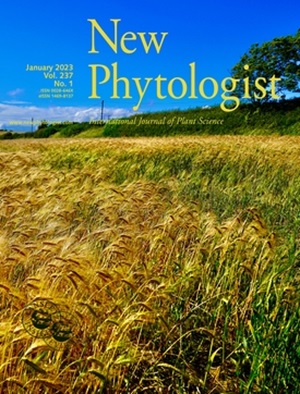Convergent and/or parallel evolution of RNA-binding proteins in angiosperms after polyploidization
IF 8.3
1区 生物学
Q1 PLANT SCIENCES
引用次数: 0
Abstract
- Increasing studies suggest that the biased retention of stress-related transcription factors (TFs) after whole-genome duplications (WGDs) could rewire gene transcriptional networks, facilitating plant adaptation to challenging environments. However, the role of posttranscriptional factors (e.g. RNA-binding proteins, RBPs) following WGDs has been largely ignored.
- Uncovering thousands of RBPs in 21 representative angiosperm species, we integrate genomic, transcriptomic, regulatomic, and paleotemperature datasets to unravel their evolutionary trajectories and roles in adapting to challenging environments.
- We reveal functional enrichments of RBP genes in stress responses and identify their convergent retention across diverse angiosperms from independent WGDs, coinciding with global cooling periods. Numerous RBP duplicates derived from WGDs are then identified as cold-induced. A significant overlap of 29 orthogroups between WGD-derived and cold-induced RBP genes across diverse angiosperms highlights a correlation between WGD and cold stress. Notably, we unveil an orthogroup (Glycine-rich RNA-binding Proteins 7/8, GRP7/8) and relevant TF duplicates (CCA1/LHY, RVE4/8, CBF2/4, etc.), co-retained in different angiosperms post-WGDs. Finally, we illustrate their roles in rewiring circadian and cold-regulatory networks at both transcriptional and posttranscriptional levels during global cooling.
- Altogether, we underline the adaptive evolution of RBPs in angiosperms after WGDs during global cooling, improving our understanding of plants surviving periods of environmental turmoil.
多倍体化后被子植物中 RNA 结合蛋白的趋同和/或平行进化。
越来越多的研究表明,全基因组重复(WGDs)后与胁迫相关的转录因子(TFs)的偏向性保留可重新连接基因转录网络,促进植物适应具有挑战性的环境。然而,转录后因子(如 RNA 结合蛋白,RBPs)在 WGD 后的作用在很大程度上被忽视了。我们在 21 个具有代表性的被子植物物种中发现了数千个 RBPs,并整合了基因组、转录组、调控组和古温度数据集,以揭示它们的进化轨迹以及在适应挑战性环境中的作用。我们揭示了RBP基因在应激反应中的功能富集,并确定了它们在独立的WGDs(与全球降温期相吻合)的不同被子植物中的趋同保留。从 WGDs 中提取的大量 RBP 重复基因被确定为冷诱导基因。在不同的被子植物中,WGD 衍生的 RBP 基因与冷诱导的 RBP 基因之间有 29 个正交组明显重叠,这突出表明了 WGD 与冷胁迫之间的相关性。值得注意的是,我们揭示了富含甘氨酸的 RNA 结合蛋白 7/8(GRP7/8)和相关的重复 TF(CCA1/LHY、RVE4/8、CBF2/4 等),它们在 WGD 后共同保留在不同的被子植物中。最后,我们说明了它们在全球变冷期间在转录和转录后水平上重新连接昼夜节律和冷调节网络中的作用。总之,我们强调了被子植物在全球变冷期间发生 WGD 后 RBPs 的适应性进化,从而加深了我们对植物在环境动荡时期生存的理解。
本文章由计算机程序翻译,如有差异,请以英文原文为准。
求助全文
约1分钟内获得全文
求助全文
来源期刊

New Phytologist
生物-植物科学
自引率
5.30%
发文量
728
期刊介绍:
New Phytologist is an international electronic journal published 24 times a year. It is owned by the New Phytologist Foundation, a non-profit-making charitable organization dedicated to promoting plant science. The journal publishes excellent, novel, rigorous, and timely research and scholarship in plant science and its applications. The articles cover topics in five sections: Physiology & Development, Environment, Interaction, Evolution, and Transformative Plant Biotechnology. These sections encompass intracellular processes, global environmental change, and encourage cross-disciplinary approaches. The journal recognizes the use of techniques from molecular and cell biology, functional genomics, modeling, and system-based approaches in plant science. Abstracting and Indexing Information for New Phytologist includes Academic Search, AgBiotech News & Information, Agroforestry Abstracts, Biochemistry & Biophysics Citation Index, Botanical Pesticides, CAB Abstracts®, Environment Index, Global Health, and Plant Breeding Abstracts, and others.
 求助内容:
求助内容: 应助结果提醒方式:
应助结果提醒方式:


